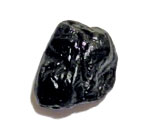The Emerging Epidemic of Nonalcoholic Fatty Liver Disease
Posted by: admin on: April 19, 2011
Nonalcoholic fatty liver disease (NAFLD) includes the clinical-pathologic entities of steatosis (nonalcoholic fatty liver, or NAFL) and nonalcoholic steatohepatitis (NASH) with or without fibrosis and cirrhosis. Most of the patients are modestly obese and some have diabetes mellitus.
Associated Diseases
Components of metabolic syndrome, including obesity, hyperlipidemia, and type 2 diabetes mellitus, are frequently present in NAFLD
Hyperlipidemia, rapid weight loss following gastric bypass for obesity, short bowel syndrome, prolonged use of total parenteral nutrition, small bowel bacterial overgrowth from jejunal diverticulosis, abetalipoproteinemia, hypobetalipoproteinemia, and Weber-Christian disease are associated with NAFLD Lipodystrophy with fat mobilization from peripheral fat stores can result in fat accumulation and inflammation of the liver..
History
A common presentation is finding abnormal liver tests on routine blood testing. Some patients present with continuous, burning right upper quadrant pain or hepatomegaly. NAFLD might be discovered during an evaluation of fatigue, malaise, or weakness, following the identification of a fatty liver on ultrasound, or when testing a patient for suspected hemochromatosis. A careful history for ethanol ingestion should also be obtained; a diagnosis of NAFLD should be applied only to patients who consume < 20 g of pure ethanol equivalent (approximately 2 American beers) daily
Physical Findings
Truncal obesity with increased waist circumference is common. Lipodystrophy with sparing of the face occurs in adults with limb lipodystrophy. Acanthosis nigricans is noted in 50% of children with NASH.
Laboratory Features
Liver tests may be normal or include mild elevation of aspartate aminotransferase (AST) and alanine aminotransferase (ALT), although these values are rarely more than 2 or 3 times normal. Most patients will have an AST/ALT ratio of < 1, whereas an AST/ALT ratio > 1 in patients with NASH may be associated with cirrhosis. Alkaline phosphatase and gamma glutamyltranspeptidase levels are normal or slightly elevated. Circulating cytokeratin 18 fragment levels, a marker of apoptosis, are elevated in patients with NASH
Both serum ferritin levels and transferrin saturation may be high, although levels consistent with hemochromatosis are not observed. The ratio of desialylated transferrin to total transferrin is said to separate patients with NASH from alcoholic fatty liver because the ratio is elevated in alcoholic fatty liver and not in NASH. Its clinical utility remains to be defined. Glucose intolerance and hyperlipidemia are frequent, and low-titer antinuclear antibody levels occur.
the diagnosis of NAFLD can be suspected by the presence of associated disorders or by ultrasound screening, the proven diagnosis rests on liver histology and exclusion of significant ethanol intake.
In patients with pure fatty liver who lack necroinflammatory changes or NASH, progressive liver disease may not occur. In those with NASH, at least one third will have progressive disease.
In a recent trial, 22% of patients had progression of fibrosis, whereas fibrosis remained stable in 46% and regressed in 18% over 2 years. Factors associated with development of advanced fibrosis in NASH include increased age, low initial fibrosis stage, and lobular inflammation at initial liver biopsy. Hepatocellular carcinoma develops in 5%-7% of patients with cirrhosis or advanced fibrosis from NASH.
Practitioners should screen the following patients:
- Those who manifest components of metabolic syndrome, including truncal obesity, increased waist circumference, hyperlipidemia, and type 2 diabetes mellitus, and those with systemic hypertension and other features of metabolic syndrome;
- Those with morbid obesity;
- Those with fatty liver at radiologic testing;
- Those with elevation of serum aminotransferases;
- Those with elevated aminotransferases and suspect medications;
- Those with rapid weight loss and elevated aminotransferases; and
- Those being considered for surgical therapy of obesity.
Although liver histology is the gold standard for diagnosis of NAFLD, patients can be screened by a careful history and physical examination that includes looking for associated conditions or hepatomegaly, assessment of serum aminotransferases and laboratory studies suggestive of metabolic syndrome, and ruling out other causes of liver disease, such as alcoholism, hemochromatosis, and hepatitis B or C.
Therapy for NAFLD
The initial therapy for NAFLD should be directed at changes in lifestyle and the associated underlying conditions. Weight reduction and exercise should be as starting points for those who are obese. Clinical information suggests that a loss of 10% of body weight may have a significant effect on improvement of liver tests and of symptoms, such as right upper quadrant pain. For patients with glucose intolerance, blood sugar control is crucial. Hyperlipidemia can be treated with medications when needed. Currently, no specific dietary program can be recommended, although diets low in fat and carbohydrates and supplemented by probiotics may be appropriate.
Current medications should be evaluated; if known to be associated with NAFLD, they should discontinued when possible. With suspected bacterial overgrowth of the small bowel, periodic administration of broad-spectrum antibiotics may be considered.
Pharmacologic therapy of NASH is limited and no specific therapy is currently approved for treatment. Although it seems intuitive that insulin-sensitizing agents should be effective, thiazolidinediones (glitazones) may only be partially effective and metformin not at all. Vitamin E seems to improve liver histology in patients who have NASH but not diabetes mellitus additional studies are needed. A preliminary trial of pentoxifylline improved aminotransferases and liver histology.
For patients with morbid obesity, gastric bypass surgery can improve hepatic inflammation, steatosis, and fibrosis. Orthotopic liver transplantation is used for those with end-stage disease, although recurrence of NASH post transplantation is frequent. Patients who undergo liver transplantation must closely control weight gain and hyperlipidemia.
Search
- drchasrani: Difficult to get such a data, authenticated at that. Try Times of India online library
- rakesh pore: hi, where can i get genuine information about "10 most common drugs sold in india?" i want it for a local project
- nilesh dutta: sir, Plz give detail about MBA Sports Management Thanks and Regards


Leave a Reply